Becoming an Artist All Over Again
Ann Klefstad profiles Duluth-based artist Marian Lansky, a graphic designer who, after 22 years, becomes her own client - and conceives an alter ego, Shy Nimitta.
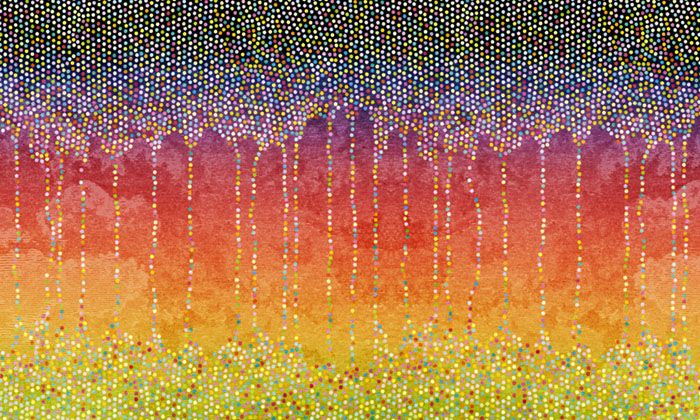
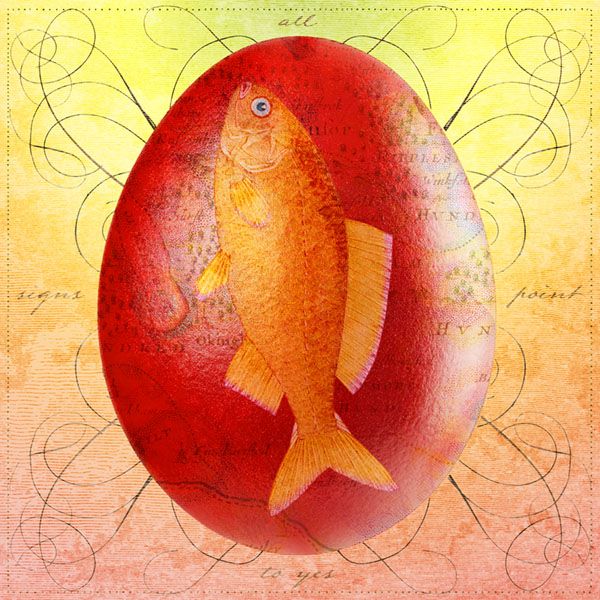

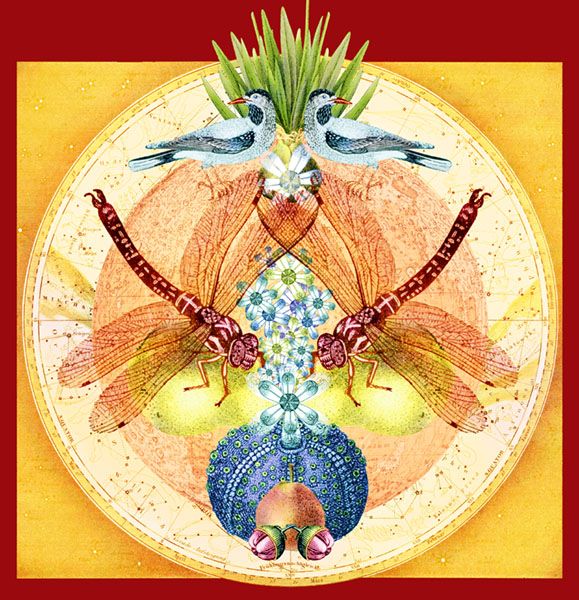
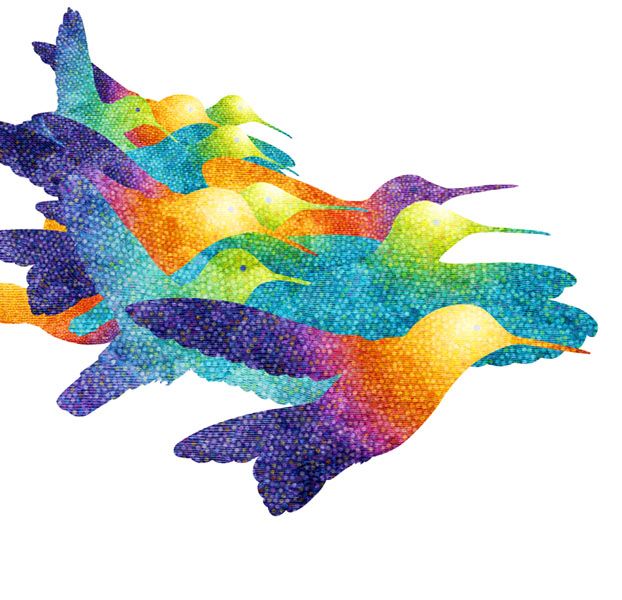
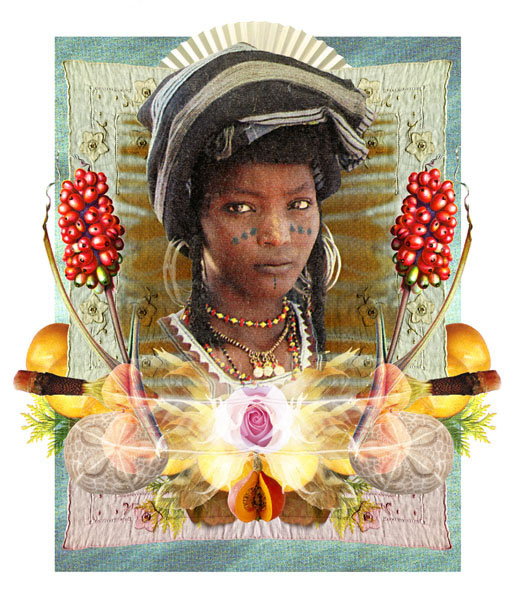
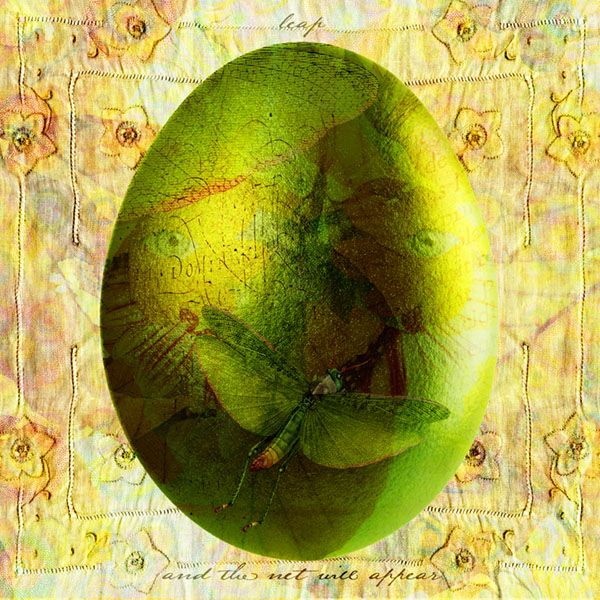
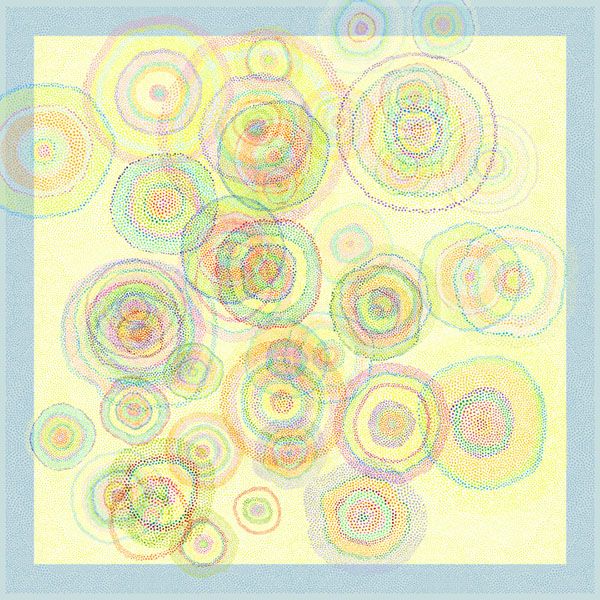
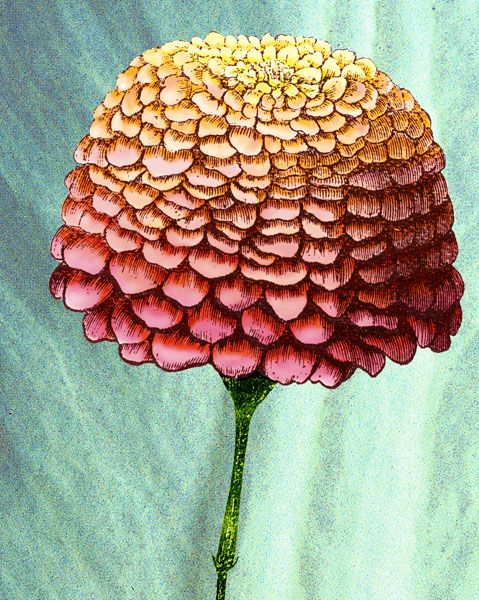
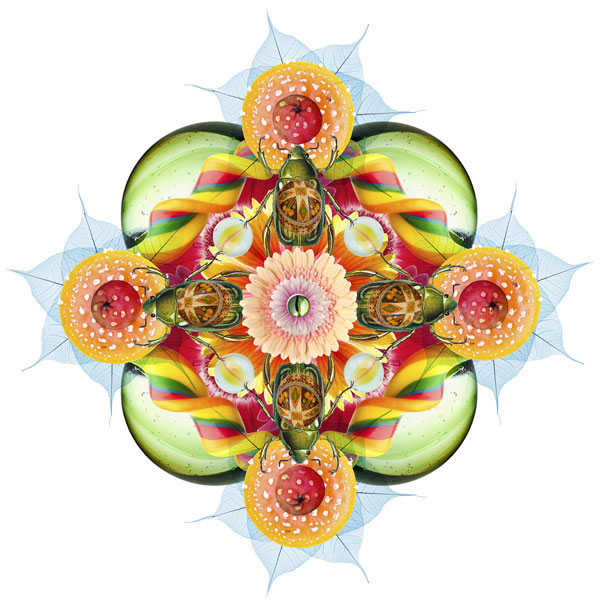
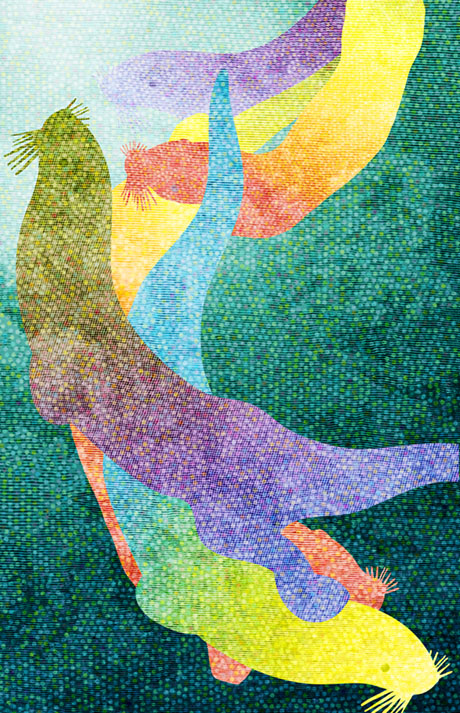

OUT OF CLARITY COMES SHY NIMITTA. The mythic-sounding phrase describes the shift Marian Lansky made in her career. Her graphic design firm, Clarity, for over two decades brought just that to clients’ content ideas. Lansky’s distinctive and elegant way with text and images served clients in the Duluth area and elsewhere, from New Moon magazine for girls to Essentia Health and many more — for a couple of decades now, she’s had more work than she could do.
But recently, Lansky was commissioned by a longtime client, Essentia Health Services (formerly Duluth Clinic/St. Mary’s Hospital), to create a series of posters on mission and values for their cafeteria. Working with images of plants, Lansky allowed that imagery to have its head, so to speak; what were to be just “posters” became digital collage-paintings — spectacular works of art, not pedagogy. With some trepidation but also exhilarated by the emerging thread in the work, Lansky completed three of the commissioned images, printed them on her large-format printer, and brought them to her client, “as scared as I’d ever been going into a client meeting,” she remembers.
She needn’t have worried; the hospital loved them.
Lansky decided to move into this new way of making, full-time. To that end, she invented a persona, Shy Nimitta, to distinguish the shift. She says she initially found it useful to think of herself as a client: she committed to designing form that would suit her own ideas.
At a recent open house in the studio (Kenspeckle Press in the DeWitt Seitz Building of Duluth’s Canal Park), people actually were moved to tears by some of these works — the “eggs” in particular. Lansky’s many years of experience uniting concept and form as a designer serve her well in this new way of working. “I put things out that are very dear to my heart, and people liked that especially.”
She muses that her next projects are informed “by the way, when you’re a child, you can look at something and you know how you want to play with it,” the way the thing’s nature opens to that kind of engaged perception. As Above, So Below, a very large image incorporating colored dots, is the first in one of these new series.
The following is an interview with Marian Lansky about how this change in her work came about, and what it’s meant for how she sells her work and earns a living.
______________________________________________________
Ann Klefstad: You have been an artist for many years, but you began as a graphic designer, is that true?
Marian Lansky: Actually, until two years ago, I did not consider myself an artist, even though I was trained as one as a kid. I went to the High School of Music and Art in New York City, and studied with Rudolf Baranik, May Stevens and other prominent artists of the ’60s. But like many women of that era, I didn’t trust my own vision, and in truth wasn’t even aware of it. I began my graphic design business in 1989, because it was something I could do while staying home with my son, who was two at the time.
What was your training in graphic design? How did you come to it?
I never studied graphic design, but I’ve always loved combining images and type. I’d begun doing advertising flyers for a local small business — hand lettering and paste-up. I thoroughly enjoyed doing that. The first time I saw a Macintosh computer, with a scanner and Pagemaker 1.0, I was enthralled. I went out and got a business loan and bought a Mac IICX, an Apple Laserwriter, and one of the first HP scanners. I had no idea what I was doing…. I’d never sat at a computer before. But I read the software manuals from cover to cover while my son was sleeping, trying out each step. I learned Pagemaker and Freehand that way, and it seems as though my business took off like magic from there. With each new development in software and technology, I did the same thing, taught myself to use it. I was one of the first people doing digital design in this area, so the timing was excellent.
What did you love most about working in graphic design?
Graphic design gave me the structure I needed to indulge my creativity. Without that structure, I seemed to have no impetus to do so. I loved solving the problems my clients presented me with, being a facilitator for their communications, working with color and typography, paper and ink. Eventually, however, after 22 years of this, I began to feel limited by client constraints — I wanted to go a little crazy, I wanted to use colors that weren’t corporate, and use images that didn’t ‘fit the brand.’ The structure that [initially] allowed me to be creative had finally become too small for me, and I began to do my own artwork. I became my own client, in a sense.
Now you’re doing Shy Nimitta. What is this project?
Shy Nimitta was a way for me to come out of the closet, so to speak. I’d never really shown my true creativity to the public before — I’d always hidden behind the graphic designer role. So, I wanted a business name to hide behind. I still like it, although I am little by little dissolving [the persona] and coming out under my own name. Shy Nimitta is my way of indulging every idea that comes into my head; I try everything I think of. It gives me a little bit of cover.
How does what you’re doing now differ from your previous work?
Now, I’m beginning to go further afield in my work — away from trying to do work that appeals to the “North country” art buyer, and into areas that may seem challenging but still accessible for them. I’m taking that risk. I hope to bring out a new series later this year.
Tell me about the hospital commission.
I worked for St. Mary’s Hospital years ago as a graphic designer, and also for Essentia when they first started and for the Benedictine Health System over the years. So, I was known as a designer in these circles. They called me in to design a series of mission-and-values posters for their new cafeteria, yet I sensed that they were actually wanting something more: they seemed to be stretching towards something more art-like and less design-like. I took the risk and did something completely unexpected. I created three pieces (eventually there would be fourteen), printed full-size, to show them before continuing. I don’t think I’ve ever been as scared to go into a client meeting as I was that day. But they loved what I did — they were surprised, but they loved it.
______________________________________________________
I keep my head down and try to stay true to myself and do my best work. I try to please myself first. And I assume that if something pleases my soul, it’ll reach someone else’s soul, too.
______________________________________________________
You are working with Rick Allen, who’s a beloved artist around here as well. Is your work together a partnership or parallel play?
It’s both. Sometimes we actually sit down and work together, and at other times we consult, showing each other things and asking for advice. At other times, we show each other nothing until the piece is almost finished… so it varies. There’s “our” work and “my” work — but we always show each other a nearly-finished piece. I’ll have a little color suggestion for Rick, or he’ll have a little composition suggestion for me. We don’t necessarily take each other’s advice, but [when we do] it’s often good.
How is your dissemination process different now from when you were doing graphic design? Or, put another way, how does the way you sell your work differ from when you were doing graphic design for clients?
When I was a graphic designer, my work seemed to sell itself. I always had the attitude that — if I kept my head down, served my clients, and did the best work possible — word-of-mouth would bring me business. And that worked for 23 years; I almost always had more work than I could handle. I felt very confident in that way.
Working as an artist, I feel like I’m starting over from scratch — it’s a bit scary. I’m going from making a pretty good living, to just starting to sell. But I have the same attitude: I keep my head down and try to stay true to myself and do my best work. I try to please myself first. And I assume that if something pleases my soul, it’ll reach someone else’s soul.
I’m fortunate in that I have a lovely gallery carrying my work [Siiviis, formerly Sivertson Gallery], one that stands behind me and puts some effort into publicizing me. I’d like to have a few more like this, in different regions.
In addition, there’s the social networking aspect of being an artist — not only online, but in the flesh. You have to allow people to reach you and talk to you and participate with you. People need to feel that you see them, that you hear them. It’s a whole different feeling than when someone is paying you to design something for them. It’s much more personal, surprisingly enough. And, for an artist, this doesn’t necessarily feel natural: I think many artists are more reclusive, more introverted than not. So, it takes a little getting used to at first… letting people in. It’s part of selling your work. I’ve begun to enjoy it very much.
Having had a successful business, I also understand that sometimes you have to spend money to make money. This is hard for some artists to understand. How can you justify putting $3000 on a credit card to print notecards of your work? But each notecard acts as a little ambassador: spreading your name, bringing people to your website, getting your images out there. It’s a little leap of faith. It’s the same thing with websites: I see some artists with websites that don’t offer any sales options, or even options for interaction. Heck, even if all you sold off your website in a month was $50 worth of notecards, that would mean the site was paying for itself.
Some artists are so good, right out of the gate, that worrying about this stuff isn’t even a concern. But for the rest of us, a little bit of help in understanding that you are running a business, an art business, can go a long way.
______________________________________________________
Related information and links:
See examples of Marian Lansky’s work as Shy Nimitta on the Kenspeckle Letterpress website.
______________________________________________________
About the author: Ann Klefstad is an artist and writer in Duluth.